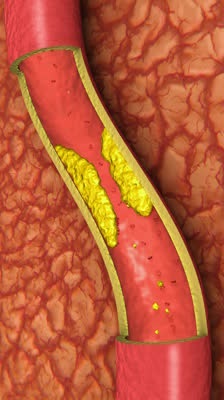Bad fat finding method honed
 A team in the US have developed a new method for estimating low-density lipoprotein cholesterol (LDL-C) levels, which is more accurate than standard ways for measuring ‘bad’ cholesterol.
A team in the US have developed a new method for estimating low-density lipoprotein cholesterol (LDL-C) levels, which is more accurate than standard ways for measuring ‘bad’ cholesterol.
Low-density lipoprotein cholesterol is in the crosshairs of a large part of the medical community as a major contributor to diminished health levels for millions of people.
Better ways of assessing and reducing LDL-C levels is a primary target for research in national and international clinical practices.
A technique developed at the Johns Hopkins Ciccarone Center for the Prevention of Heart Disease now includes a variable factor for measuring triglyceride levels to very low-density lipoprotein cholesterol ratio (TG:VLDL-C) based on triglyceride and non-HDL-C concentrations.
The adjustable TG:VLDL-C factor is a considerable improvement on the standard practice of assuming a fixed ratio of 5:1, researchers say.
Background information in the study said; “applying a factor of 5 to every individual patient is problematic given variance in the TG:VLDL-C ratio across the range of triglyceride and non-HDL-C levels.”
Researchers used an incredible base of information for their investigations, sampling lipid profiles from 1,350,908 children, adolescents, and adults in the United States.
The new technique allows a physicians to estimate LDL-C from the standard lipid profile, consisting of a 180-cell table (grid) of median TG:VLDL-C values based on triglyceride and non-HDL-C values.
“The greatest advantage occurs in classification of LDL-C concentrations lower than 70 mg/dL, especially in patients with elevated triglyceride concentrations. In addition to the novel analytic approach, a major strength of this study is its size, 3,015 times larger than the original Friedewald database,” a new report says.
“These findings require external validation, as well as assessment of their clinical importance. The novel method could be easily implemented in most laboratory reporting systems at virtually no cost.”
More details will be available with the release of the November edition of the Journal of the American Medical Association.








 Print
Print